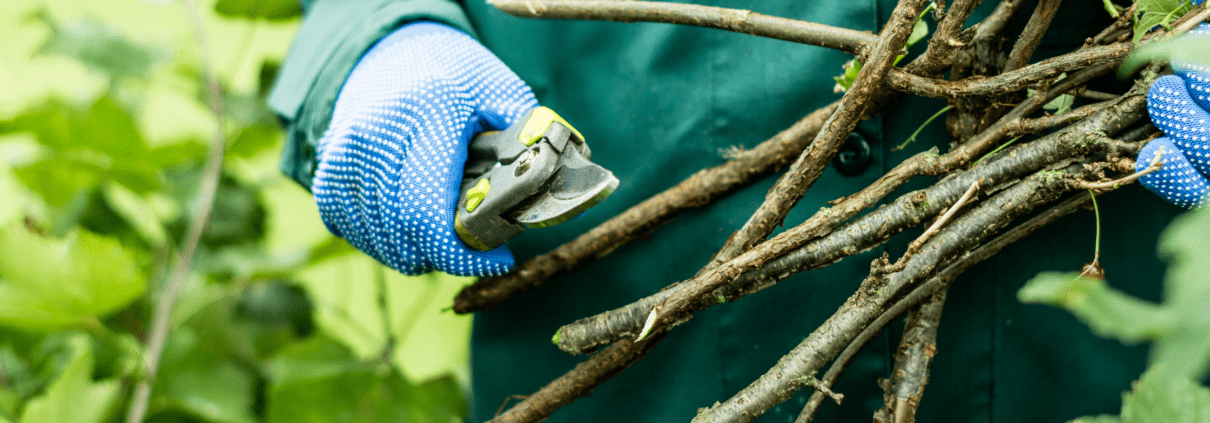10 Reasons Why You Should Prune Trees and Shrubs
Tree & Shrub Pruning Tips
by Chris McLaughlin
Not sure about pruning your plants? We’ve compiled 10 reasons why you should prune trees and shrubs in your yard or garden to help maintain their long-term health.
Practicing simple techniques, using the right tools, along with proper timing for each plant species is the key to effective pruning and most require very little pruning in order to achieve the gardener’s goal. But before taking sharp tools to your plants, you should understand exactly what those goals are and why you’re pruning them in the first place.
to effective pruning and most require very little pruning in order to achieve the gardener’s goal. But before taking sharp tools to your plants, you should understand exactly what those goals are and why you’re pruning them in the first place.
Remember that every cut made will alter the plant’s shape and growth. In fact, the list below addresses the many reasons that any tree or shrub should be pruned in the yard or garden. If you are interested in having your trees or bushes trimmed, remember that you can use a service like TreeSurgeon.Care to help.
Here are ten great reasons to prune trees (including fruiting) and shrubs:
Reason #1: Vigor
Pruning a growing shoot stimulates new growth production. So if you’re looking for some vigorous new growth on a shrub, prune it hard (a lot). Consider this type of pruning when you have a shrub that has a weak section of growth; such as the back. In fact, when you “pinch” back new growth with your fingers on any plant, you’re actually pruning.
Reason #2: Shape
Plants that have grown out of balance with either the yard or their own growing pattern (such as stray and awkward branches) can be reshaped by pruning.
Reason #3: Restrict a Plant’s Size
This can be especially important if you live in an area with restricted space. Gardeners living in urban and suburban areas almost always have to prune trees and shrubs to keep them from out-growing the yard, garden, or container. Root-pruning is another technique that can help restrict the size of plants in containers.
Reason #4: Let in More Light
If you have an extremely shady yard or you’d like to have more sun reaching the area under a tree for plants or lawn, careful pruning can let in a little extra sunshine.
Reason #5: Health and Structural Soundness
Any diseased, injured, dying, or dead branches should be removed for the health of the tree. Branches that rub together should be removed to eliminate potential damage to a main branch. Much of maintaining structural soundness in a tree is about careful pruning practices such as not “topping” trees. Topping can make the tree weak and susceptible to pests. It’s also associated with the slow death even if it takes years for the tree to actually die.
Reason #6: Create Special Effects
Most often, pruning for special effects is seen in formal-type gardens. They often take the shape of boxwood topiary or an apple tree that’s been trained as an espalier. Pollarding or coppicing pruning techniques may be used, as well.
take the shape of boxwood topiary or an apple tree that’s been trained as an espalier. Pollarding or coppicing pruning techniques may be used, as well.
Reason #7: Encourage Flowering and Fruit
Pruning can coax growth spurs (produces the flowers and the fruit) to form on the branches. Strong flower buds are also encouraged to form due to pruning. Fruit trees can be lightly pruned in the summer which will provide better air circulation around the fruit. This results in less trouble with fruit diseases and the fruit ripens faster.
Reason #8: Protect People and Property
Prune trees that have been planted near homes, sheds, play structures, and other buildings as they propose a potential threat to human safety if heavy branches break off or the tree falls. They can also interfere with telephone or power lines. Proper pruning can keep people, pets, and property safe.
Reason #9: Keep Evergreens Proportionate
Pruning will keep boundary hedges under control. Evergreens benefit from light pruning as it keeps their foliage dense, and therefore, attractive.
Reason #10: Improve Appearance
Many gardeners’ top priority when pruning their plants is about their appearance in the yard or garden. Removing dead, unwanted branches, as well as suckers creates a pleasing shape and leaves plants looking neat and tidy. Many lovely blooming shrubs such the Butterfly Bush (Buddleia spp.) are capable of spectacular blossom displays due to good pruning techniques.
Usually pruning is about working with a plant’s natural growth pattern as it’s developing, as well as maintaining mature tree and shrub species. One of the few exceptions is when it’s used to create effects such as espalier. In general, a successful pruning job will leave your healthy, beautifully-shaped fruit trees or shrubs looking like they haven’t been touched at all.
Ready to get pruning in your garden? Check out our list of must-have gardening tools!

